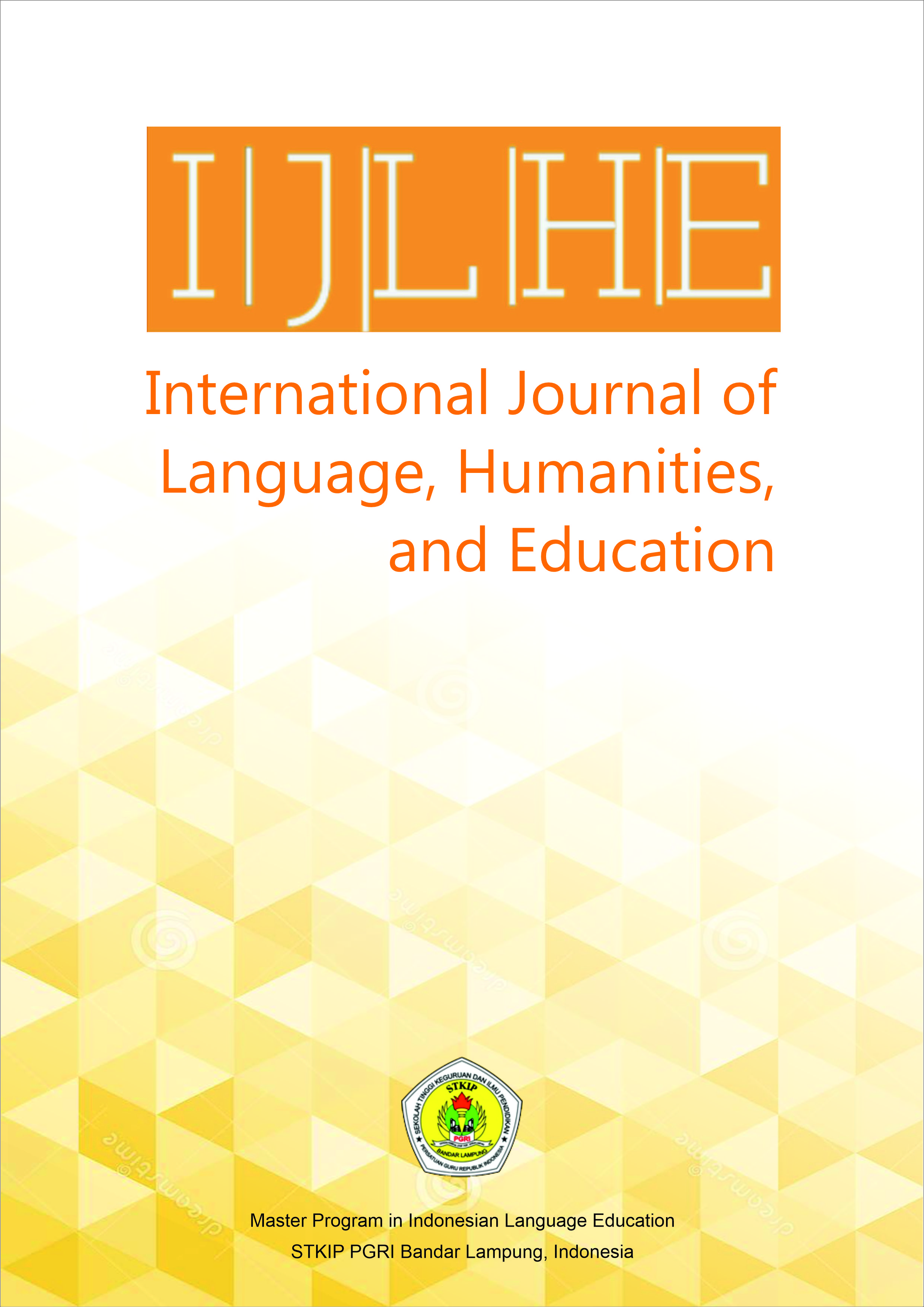Mandarin Swear Words Used by Chinese: A Descriptive Qualitative Study
DOI:
https://doi.org/10.52217/ijlhe.v8i1.1817Keywords:
Mandarin Swear Words, Form, Functions, ReferencesAbstract
Swear words, while often considered taboo, have played a significant role in human communication. This study aimed to identify the Mandarin swear words used by Chinese speakers, analyze their forms, references, and functions. The research was conducted using a descriptive qualitative design. Primary data were collected through document analysis and interviews. The researcher acted as the main instrument, supported by document analysis sheets and interview guides. Three informants were selected based on predetermined criteria. The data were analyzed descriptively using the theory of Miles and Huberman (1984). The results of the study showed that there were 34 Mandarin swear words used by Chinese speakers. In terms of form, 13 were classified as words, consisting of 1 monomorphemic word and 12 polymorphemic words; 12 were phrases, and 9 were clauses. With regard to their references, five categories were identified: sex (5), excrement (2), animal names (2), mental illness (3), and personal background (5). Furthermore, five functions of Mandarin swear words were found: expressing emotion (8), drawing attention (5), social group identity (2), aggression (18), and regressive (1). These findings highlight the various ways in which swear words are employed in Mandarin, revealing their communicative purposes and sociolinguistic relevance.
References
Beers Fägersten, K., & Stapleton, K. (Eds.). (2017). Advances in swearing research: New languages and new contexts. John Benjamins Publishing Company.
Bolton, K., & Hutton, C. (1997). Bad boy and bad language: Chou hau and the sociolinguistics of swear words in Hong Kong Cantonese. Curzon.
Fauziah Nasution, & Tambunan, E. E. (2022). Language and communication. International Journal of Community Service (IJCS), 1(1), 1–10. https://doi.org/10.55299/ijcs.v1i1.86
Hughes, G. (2006). An encyclopedia of swearing: The social history of oaths, profanity, foul language, and ethnic slurs in the English-speaking world (1st ed.). Routledge.
Li, C. N., & Thompson, S. A. (1977). The acquisition of tone in Mandarin-speaking children. Journal of Child Language, 4(2), 185–199. https://doi.org/10.1017/S0305000900001598
McEnery, T. (2006). Swearing in English: Bad language, purity and power from 1586 to the present (1st ed.). Routledge. https://doi.org/10.4324/9780203501443
Miles, M. B., & Huberman, A. M. (1994). Qualitative data analysis: An expanded sourcebook (2nd ed.). Sage Publications.
Murtadhoh, N. L., & Arini, W. (2023). The existence of Chinese language in the globalization era. Journal of Maobi, 1(1), 7–13. https://doi.org/10.20961/maobi.v1i1.79731
Nguyen, T. T. N. (1993). Linguistic-cultural characteristics of Vietnamese cursing. Language, 1, 32–38.
O'Driscoll, J. (2020). Offensive language. Bloomsbury Publishing.
Rothwell, J. D. (1973). Verbal obscenity: Time for second thoughts. In Liedlich (Ed.), Coming to terms with language: An anthology. John Wiley & Sons.
Setyaningtias, S., Heriyanto, E., & Muhid, A. (2023). The use of swearing words of young multicultural students: A sociolinguistics study. English Language and Education Spectrum, 3(1). https://doi.org/10.53416/electrum.v1i1.101
Sukmaningrum, R., & Hawa, F. (2022). A discourse analysis of English swear words used in American movies. ETERNAL (English Teaching Journal), 13(2), 1–12. https://doi.org/10.26877/eternal.v13i2.12000
Tran, D. T. (2024). A comparative study of Vietnamese and English swear words: A discourse analysis perspective. Multidisciplinary Science Journal, 7(1), Article 2025028. https://doi.org/10.31893/multiscience.2025028
Wijana, I. D. P., & Rohmadi. (2007). Sosiolinguistik: Kajian teori dan analisis. Universitas Gajah Mada.
Zhao, L. (2021). The characteristics of swearing in Mandarin and its implied femininity. Frontiers in Humanities and Social Sciences, 1(7). https://doi.org/10.29561/FHSS.202110_1(7).0001














